The third day of our workbench course was a lot of work; hard maple is not too forgiving! We started the day by laying out the dog runs.
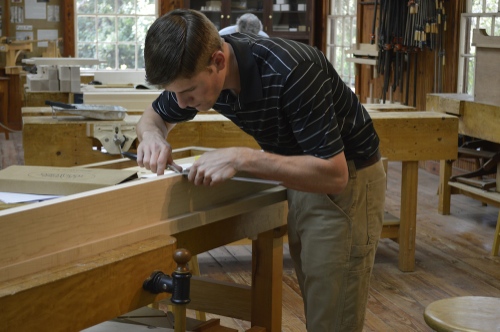
Laying out dog runs
We used a divider to find the correct spacing between the dogs, then used a hand-saw and chisel to remove most of the waste from each dog hole.
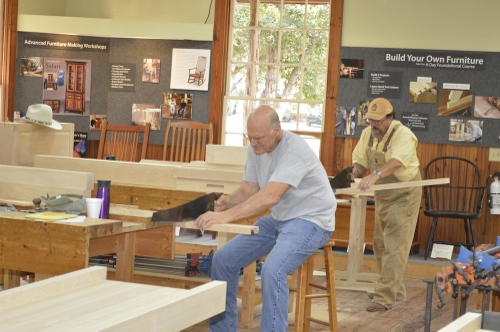
Hand sawing the dog run
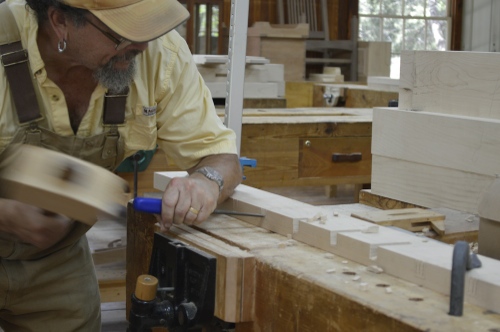
Chiseling out the dog run waste
We then routed each dog using a jig to ensure they were all the same (yeah, I said routed it).
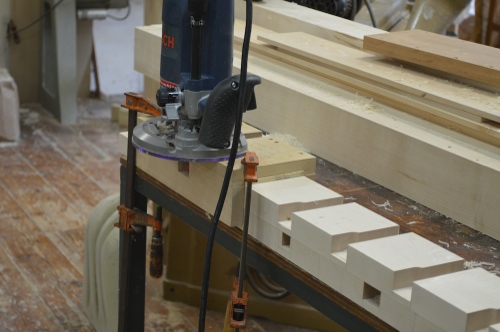
There’s the scary router again!
We had to first mill the 3/8 maple strips that glue onto the dog runs and then finished by gluing them on to the routed dog runs. We then marked the tenons on the legs and then rough cut them on the table saw. They will need to be fine tuned with a hand plane during the fitting process. We finished up the day by flattening the two side pieces that we glued on to the bench top on Tuesday; our goal is to make it the same level as the top. Stay tuned as we have lots more to do!
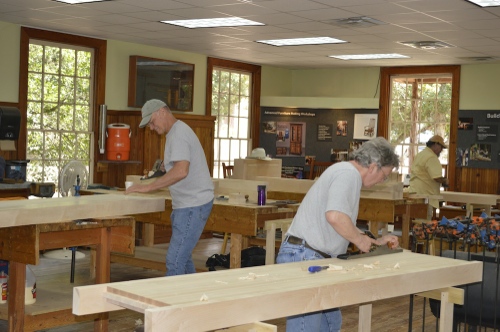
Hand planing the top
Jonathan Schwennesen with Frank Strazza
Interested in a workbench course? Check them out and sign up here. Why are workbenches important? Read our earlier blog post. Can’t make it to Texas? Learn online.
Comments are closed.